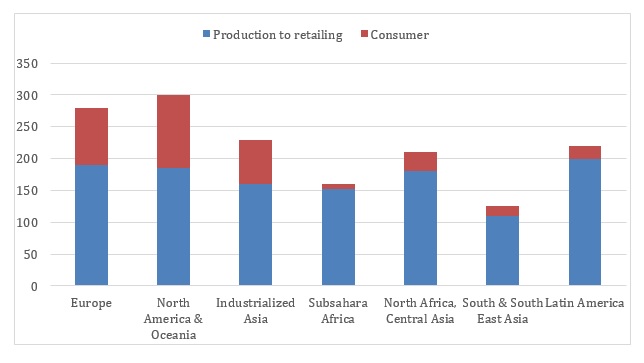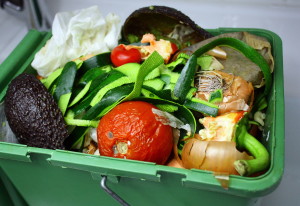GROCERY WARS – “FOOD WASTE IN CANADA – AN EPIDEMIC!”
With families feeling the pinch in their grocery bills, many are doing everything they can to save on foods; this includes, switching grocery stores to coupon shopping or opting for cheaper brands. Yet, many continue to overlook the one area that can have the biggest impact on their wallet, cutting waste. Food waste in Canada and around the world has become an epidemic. So, how much food do Canadians waste each year, what can families do to cut their food waste and how could better communications with respect to expiration dates be critical to success?
Food Waste is a Global Epidemic!
Globally, roughly one third of the food produced in the world for human consumption each year – approximately 1.3B tones is wasted annually. Food waste amounts to US$680B in industrialized and US$310B in developing countries. Globally North American and Oceania (Islands of the tropical Pacific Ocean) regions waste the most amount of food at consumption and pre-consumption stages as outlined in Chart 1.
Chart 1
Per Capita Food Waste, at Consumption and Pre-Consumption Stages (kg / year)
How Much Food Do Canadians Waste?
In Canada, $31B worth of foods ends up in landfills or composters each year. The average Canadian household waste $31 a week, that translates into $1,600 per year. A tragedy any way you look at it especially given close to 900,000 Canadians and 37% of those being children or youth rely on the assistance of food banks each month. Asked why so much food is wasted, the typical responses included:
- Food goes bad too quickly (57%).
- It’s past its expiration date (44%).
- Cooked too much (19%).
- Do not finish their meals (11%)
Chart 2 outlines how often families throw away food.
Chart 2
How Often Do You Throw Out Food?
What Foods are Most Likely to Get Tossed?
Fresh fruits and vegetables are the most commonly wasted food item in households. Surprising, as nearly three-quarters of consumers claim they have trouble affording produce. Chart 3 outlines the most commonly wasted food.
Chart 3
Most Commonly Wasted Food Items
What Can Consumers do to Reduce Food Waste?
Planning, prepping, and storing food can help households waste less food.
- Planning: Simply making a list with weekly meals in mind can help households save money and time. Conduct an inventory of the refrigerator and cupboards to avoid buying food you already have.
- Prepping: Prepare perishable foods soon after shopping. Freeze food such as bread, sliced fruit, or meat that you know you won’t be able to eat in time.
- Storing: Research how to store fruits and vegetables so they stay fresh longer.
Communications with Expiry Dates is Critical to Success!
All parties involved in the food chain process play a role in reducing food waste. Better communications among all participants is critical, especially when it comes to expiration dates. Regardless of terminology utilized: “Best by”, “Enjoy by”, “Use by”, most consumers do not understand these are not expiration dates but suggestions as to when the product is at its freshest. Most food is often safe to eat days, weeks, even months after these printed dates.
A recent report from the U.S. Department of Agriculture suggests switching the phrase to “Best If Used By” would help reduce food waste.
Canadian Government Intervention – Beware!
Government intervention in private sector business usually translates into additional taxes for business and higher retail prices for consumers. Parties in the food chain process, beware. You have been put on notice. Though Canada won’t be serving up any food waste solutions for at least a year, “Food waste is part of the food policy that we’re going to deal with in the next year or two”. Agriculture Minister Lawrence MacAulay in conversation with CBC News, October 2016.
We all play a role in reducing food waste. Either we can act on our own initiatives or wait for Government intervention. The choice is ours to make.
For more help Getting and Staying Listed in Canada’s Grocery Sector, connect with us through our website: www.fooddistributionguy.com or give us a call toll free: 1-844-206-FOOD (3662).







